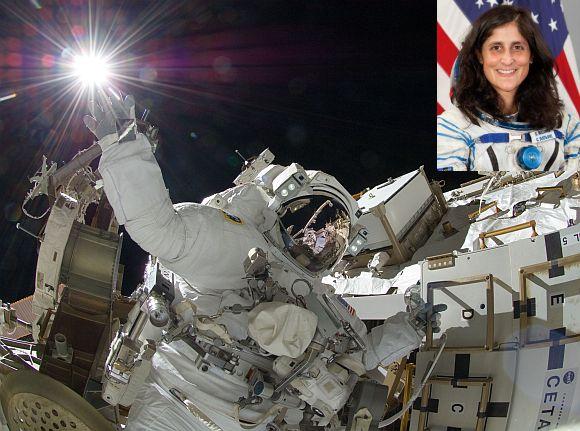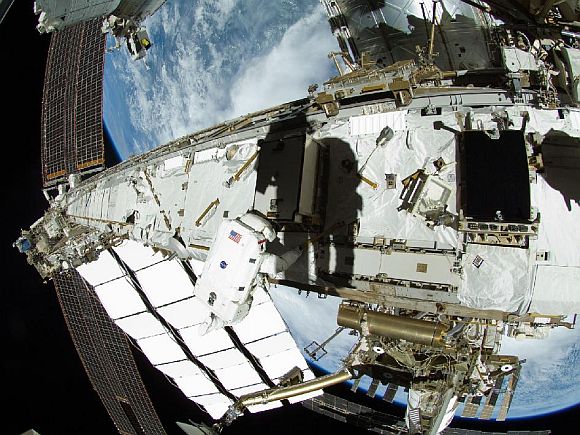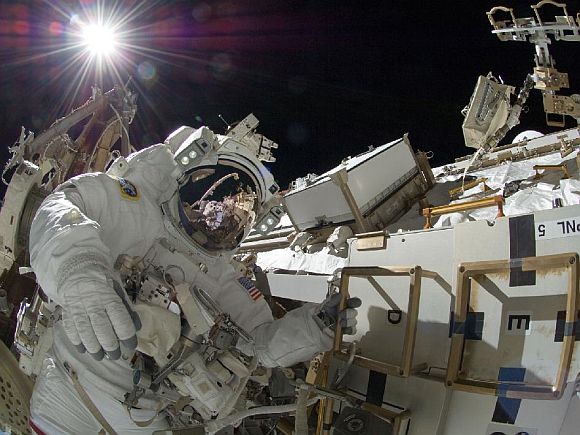 | « Back to article | Print this article |
Sunita Williams on record 7th space walk
Indian-American Sunita Williams along with a fellow astronaut on Thursday ventured out of the International Space Station, adding to her record-setting space walking sojourns, to find an ammonia leak in the vital radiator system.
Expedition Commander Williams and Flight Engineer Aki Hoshide switched their spacesuits to battery power at 1229 GMT (1759 IST), signalling the start of Thursday's planned 6.5-hour excursion outside the International Space Station, a NASA statement said.
Click on NEXT to go further...
Sunita Williams on record 7th space walk
During the spacewalk, 47-year-old Williams and Hoshide were venturing out to the port side of the station's truss to configure the 2B solar array power channel's photovoltaic thermal control system (PVTCS) to support ground-based troubleshooting of an ammonia leak, the statement said.
The spacewalking duo will isolate the photovoltaic radiator on the P6 truss from the PVTCS, shutting off the flow of ammonia in and out of it and re-routing the ammonia flow through a spare radiator so the PVTCS can continue operation, it said.
Click on NEXT to go further...
Sunita Williams on record 7th space walk
Over the following weeks and months, flight controllers at Mission Control Houston will monitor telemetry to see if the leak continues, it added.
If re-routing the ammonia through the spare radiator stops the leak, mission managers will evaluate whether to leave the fix as it is or replace the photovoltaic radiator on a future spacewalk. If the leak continues, additional troubleshooting will be required.
Click on NEXT to go further...
Sunita Williams on record 7th space walk
Williams, who is the lead for this spacewalk, wore a suit with red stripes.
This is the seventh spacewalk for Williams who holds the record for spacewalking time for female astronauts with over 44 hours during six previous excursions.
Hoshide, who was on his third spacewalk, now holds the equivalent record for Japanese astronauts.
Click on NEXT to go further...
Sunita Williams on record 7th space walk
This is the 166th spacewalk in support of International Space Station assembly and maintenance and the 138th spacewalk from the station.
On Wednesday, thrusters on a docked Russian supply ship were fired to move the space station out of harm's way. But a computer error caused the thrusters to malfunction, and the station did not reach the desired altitude.
Click on NEXT to go further...
Top PHOTO features of the week
Click on MORE to see another set of PHOTO features...





